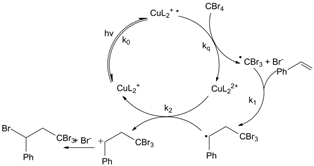Reports: DNI353764-DNI3: Copper Photosensitizers for Photoredox Catalysis
Jillian L. Dempsey, PhD, University of North Carolina at Chapel Hill

Jillian L. Dempsey, PhD, University of North Carolina at Chapel Hill

Reports in the ACS PRF Annual Report are published as submitted by the Principal Investigator.
Copyright © American Chemical Society